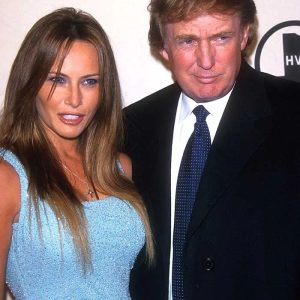In a move that is set to shake up international trade dynamics, President Donald Trump has declared his intention to implement reciprocal tariffs on all countries, not just those with the largest trade imbalances. The announcement, expected to be unveiled this Wednesday, dubbed “Liberation Day” by the president, promises to target a broad swath of global trade, including China, Europe, and other major trading partners.
Trump, known for his aggressive trade policies, views tariffs not only as a means to protect American industries but also as a strategic tool for negotiating better trade terms for the United States. His administration has already levied tariffs on a range of imports, including steel, aluminum, and automobiles, with China being a central focus of his trade agenda. However, the new tariff strategy goes beyond specific countries and aims to apply pressure across the board.
“You’d start with all countries,” Trump told reporters aboard Air Force One in a statement that raised eyebrows among economists and international trade experts alike. “Essentially all of the countries that we’re talking about.” Though he did not provide specifics on the countries involved, White House economics adviser Kevin Hassett later revealed that the administration plans to target 10 to 15 nations with the worst trade imbalances.
Trump’s hardline stance on trade is not new. Throughout his presidency, he has repeatedly emphasized the need to level the playing field for American businesses, which he believes have been unfairly disadvantaged by trade agreements that favor other countries. The president has been particularly vocal about the trade imbalances with China, which he sees as one of the primary reasons for the erosion of American manufacturing jobs.
The Mechanics of Reciprocal Tariffs
Reciprocal tariffs are designed to impose duties on imports from countries that already impose tariffs or other trade barriers on U.S. exports. The idea is simple: if a country charges tariffs on U.S. goods, then the U.S. will impose equal tariffs on that country’s goods. This concept is rooted in Trump’s belief that trade should be fair and equitable, with both sides bearing the same burden of tariffs.
Under the proposed plan, the United States would mirror the tariffs imposed by foreign nations on American exports, effectively “matching” the duties on foreign goods. The rationale behind this approach is that reciprocal tariffs will force countries to renegotiate trade deals with the U.S. to eliminate these imbalances and create a more favorable environment for American businesses.
Trump has made it clear that he is willing to take a tough stance in these negotiations. “I will implement tariffs in a way that will force other countries to come to the table and make better deals for the United States,” he said. “We will not stand idly by while other nations take advantage of us.”
The administration has already placed significant tariffs on Chinese goods, a move that escalated the trade war between the U.S. and China. However, Trump’s new strategy could widen the scope of these measures, impacting a broad range of industries beyond just those related to Chinese imports.
One area of particular focus is the automobile industry. Trump has signaled plans to impose steep tariffs on imported vehicles and auto parts. The U.S. has long had a trade deficit in the auto sector, with foreign manufacturers, particularly from Europe and Japan, dominating the market. By targeting this sector with reciprocal tariffs, Trump hopes to incentivize greater investment in the American automobile industry and reduce the trade imbalance.
As the administration prepares to unveil its tariff plan, the financial markets have become jittery, with concerns growing about the potential for a global trade war. Economists and business leaders have expressed alarm at the prospect of tariffs being applied universally, arguing that it could lead to higher costs for consumers and disrupt supply chains.






